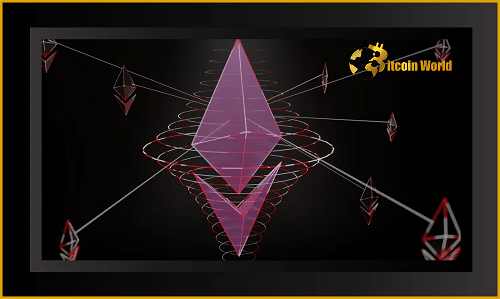The crypto world is buzzing! In a major milestone, the Goerli testnet successfully completed its merge to Proof-of-Stake (PoS) in the early hours of today. Think of it as the ultimate dress rehearsal before the main event – Ethereum’s highly anticipated ‘Merge’ happening this September. Let’s dive into what this means and why it’s such a big deal.
Goerli’s Grand Finale: A Successful Testnet Merge
Around 1:45 AM UTC, the Goerli testnet officially merged with the Prater beacon chain. This wasn’t just another update; it was the last hurdle, the final check to ensure everything is smooth sailing for the actual Merge on the Ethereum mainnet. Essentially, Goerli, one of Ethereum’s crucial test networks, mirrored the upcoming mainnet transition, allowing developers to identify and iron out any potential issues in a controlled environment.
The merge occurred when Goerli hit a Total Terminal Difficulty (TTD) of 10,790,000. While the technical details might sound complex, the takeaway is simple: the merge happened as planned!
Why is the Goerli Testnet Merge So Important?
Imagine performing a complex heart transplant – on a global scale, with trillions of dollars at stake. That’s the magnitude of the Ethereum Merge. It’s an unprecedented shift, transitioning the second-largest cryptocurrency from a Proof-of-Work (PoW) system to a more energy-efficient Proof-of-Stake (PoS) mechanism. No blockchain of Ethereum’s size and importance has ever attempted such a profound transformation. That’s why these testnet merges are absolutely critical.
Goerli was the last of three major public testnets to undergo this transition. The successful merges of Sepolia and Ropsten paved the way, building confidence and providing valuable data. Think of these testnets as vital training grounds, allowing developers to:
- Simulate real-world conditions: Testnets like Goerli closely resemble the Ethereum mainnet, providing a realistic environment for testing.
- Identify and fix bugs: By experimenting on testnets, developers can uncover and resolve potential flaws before they impact the main network.
- Ensure a smooth transition: These trials minimize the risk of disruptions during the actual Merge.
Decoding the ‘Merge’: What’s Actually Happening?
The ‘Merge’ refers to the moment when the existing Ethereum Mainnet, which currently uses Proof-of-Work, combines with the Proof-of-Stake Beacon Chain. The Beacon Chain has been running parallel to the mainnet, acting as the foundation for the upcoming PoS system. During the Merge, these two will effectively become one.
Here’s a breakdown:
- Current State (Pre-Merge): Ethereum Mainnet (Proof-of-Work) + Beacon Chain (Proof-of-Stake – operational but not processing mainnet transactions).
- Post-Merge: A unified Ethereum network where the Beacon Chain’s Proof-of-Stake mechanism becomes the engine for block production.
Why the Shift to Proof-of-Stake?
So, why go through all this trouble? The move to Proof-of-Stake brings significant advantages:
Key Benefits of Proof-of-Stake:
- Reduced Energy Consumption: PoS is significantly more energy-efficient than PoW, addressing environmental concerns. Think of it as switching from a gas-guzzling truck to an electric car.
- Enhanced Security: PoS makes the network more resistant to certain types of attacks.
- Foundation for Scalability: The Merge is a crucial step towards implementing sharding, a technology that will drastically improve Ethereum’s ability to handle more transactions.
Looking Ahead: The Promise of Sharding
Imagine a busy highway with only a few lanes – traffic jams are inevitable. Sharding is like adding more lanes to the highway, allowing for smoother and faster traffic flow. In the context of Ethereum, sharding will split the network’s data into smaller, more manageable chunks, increasing transaction processing speeds and reducing congestion. While the Merge doesn’t directly implement sharding, it lays the groundwork for its future introduction.
What Does This Mean for the Price of Ether (ETH)?
Market reactions are always interesting to observe. At the time of writing, Ether (ETH) has seen a positive surge, up by 12.35% in the last 24 hours according to CoinMarketCap. While market fluctuations are common, the successful Goerli merge is undoubtedly a positive signal, reinforcing confidence in the upcoming mainnet Merge.
The Final Countdown
With the Goerli testnet merge successfully completed, the Ethereum community is holding its breath for the mainnet Merge in September. This transition is not just a technical upgrade; it’s a pivotal moment for the entire cryptocurrency ecosystem. It promises a more sustainable, scalable, and secure future for Ethereum, potentially paving the way for wider adoption and innovative applications. Stay tuned – this is a story still unfolding, and the next chapter is just around the corner!
Disclaimer: The information provided is not trading advice, Bitcoinworld.co.in holds no liability for any investments made based on the information provided on this page. We strongly recommend independent research and/or consultation with a qualified professional before making any investment decisions.


